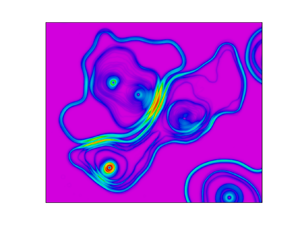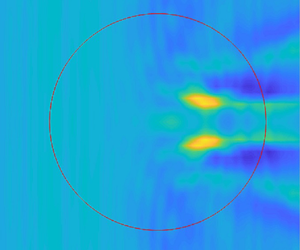Graphical abstract from Di Vaira, N., Łaniewski-Wołłk, Ł., Johnson, R., Aminossadati, S. & Leonardi, C. 2022 Influence of particle polydispersity on bulk migration and size segregation in channel flows. J. Fluid Mech. 939, A30. doi:10.1017/jfm.2022.166.
Contents
JFM Papers
The long cross-over dynamics of capillary imbibition
-
- Published online by Cambridge University Press:
- 31 March 2022, A39
-
- Article
-
- You have access
- Open access
- HTML
- Export citation
Potential vorticity fronts and the late-time evolution of large-scale quasi-geostrophic flows
-
- Published online by Cambridge University Press:
- 01 April 2022, A40
-
- Article
-
- You have access
- Open access
- HTML
- Export citation
Extreme wave statistics of surface elevation and velocity field of gravity waves over a two-dimensional bathymetry
-
- Published online by Cambridge University Press:
- 01 April 2022, A41
-
- Article
-
- You have access
- Open access
- HTML
- Export citation
Front Cover (OFC, IFC) and matter
FLM volume 939 Cover and Front matter
-
- Published online by Cambridge University Press:
- 06 April 2022, pp. f1-f2
-
- Article
-
- You have access
- Export citation











